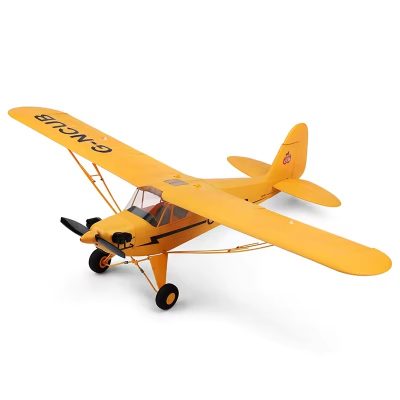Introduction
Aerial photography with RC airplanes opens up a world of creative possibilities, allowing you to capture stunning aerial views and unique perspectives. However, choosing the right RC airplane for this purpose requires careful consideration of specific features and capabilities. In this blog post, we’ll guide you through the key factors to consider when selecting an RC airplane for aerial photography.
1. Stability and Control
Stability is crucial for capturing clear and steady aerial photographs:
- High-Wing Design: Opt for a high-wing airplane design, which offers better stability and smoother flight. The high wing position helps maintain level flight and reduces the risk of sudden drops or rolls.
- GPS and Autopilot: Look for airplanes equipped with GPS and autopilot systems. These features enable precise positioning and stable flight paths, allowing you to focus on capturing the perfect shot without worrying about manual control.
2. Payload Capacity
Your RC airplane must have adequate payload capacity to carry your camera and other necessary equipment:
- Weight Limit: Check the maximum payload capacity of the airplane to ensure it can comfortably carry your camera, gimbal, and any additional accessories. Exceeding the weight limit can compromise flight performance and stability.
- Mounting Options: Choose an airplane with versatile mounting options for your camera and gimbal. Ensure the mounts are secure and vibration-resistant to avoid shaky footage.
3. Flight Time
Longer flight times allow you to capture more footage and cover larger areas:
- Battery Capacity: Select an RC airplane with a high-capacity battery to achieve extended flight times. Lithium polymer (LiPo) batteries are commonly used for their high energy density and lightweight properties.
- Efficient Power System: Look for airplanes with efficient power systems that maximize flight duration while maintaining stable performance. Brushless motors and well-designed ESCs contribute to longer flight times.
4. Camera Compatibility
Ensure your chosen RC airplane is compatible with your preferred camera setup:
- Camera Mount Compatibility: Verify that the airplane’s camera mount can accommodate your specific camera model. Some airplanes come with universal mounts that can fit a range of cameras, while others may require custom mounts.
- Gimbal Integration: A gimbal stabilizer is essential for capturing smooth and steady footage. Choose an airplane that allows easy integration of a gimbal system to minimize vibrations and ensure professional-quality results.
5. Safety Features
Safety features are essential to protect your equipment and ensure a successful flight:
- Return-to-Home (RTH): An RTH feature automatically guides your airplane back to its takeoff point in case of signal loss or low battery. This feature is crucial for preventing crashes and losing valuable equipment.
- Fail-Safe Mechanisms: Look for airplanes with fail-safe mechanisms that engage in emergencies, such as low battery or signal loss. These mechanisms can include automatic landing or hovering to prevent damage.
Conclusion
Choosing the right RC airplane for aerial photography involves considering factors like stability, payload capacity, flight time, camera compatibility, and safety features. By selecting an airplane that meets these criteria, you can ensure a smooth and successful aerial photography experience. Whether you’re capturing breathtaking landscapes or unique perspectives, the right RC airplane will help you achieve stunning results and take your photography to new heights.








